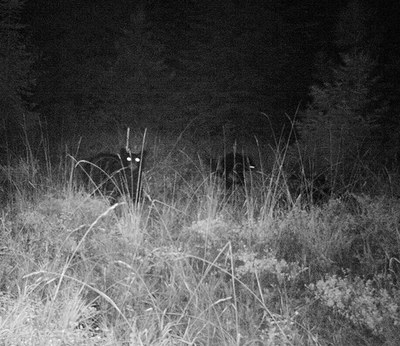
Start off with these facts (as referenced from www.defenders.org).
- Big things come in small packages.
Black bears are the smallest bear species in North America, and are only found in North America. Males have an average weight of 150-300 lbs. In comparison, a male grizzly bear can weigh 300-850 lbs. - High five!
Black bears have short, non-retractable claws that help make them great tree climbers. - Black is the new black.
The fur of eastern black bears is usually all black, but in the west, their fur can be brown, cinnamon, or blond. - Are you going to eat that?
Black bears eat everything! From berries to nuts, insects to salmon, these bears aren't picky. - Safety in numbers.
More than 600,000 black bears live in North America and about half of them live in the U.S. They reside in at least 40 states. - 30 is the new 20.
The average lifespan of a black bear is about 10 years, but they can live to nearly 30 years in the wild. - "But I'm not tired!"
If there is ample food and the weather is mild in their region, some black bears may not hibernate at all, or they might hibernate for shorter periods of time. - Black bear, party of one.
Black bears like to be alone, but they will forage with others if there is enough for everyone to eat in one area. - 6 is a crowd.
Female black bears can have litters of up to 6 cubs, but 2 cubs in a litter is most common. Females will reproduce every second year.
It is exciting to be able to see active wildlife at Land Trust Preserves through the wildlife cam lens. It is a great reminder that the Preserves are sanctuaries for wildlife, and that watching them from afar is the best way to keep them (and you!) safe. Enjoy the Bear-a-palooza slideshow! (Be sure to click "Show Info" in the upper right corner to see captions).
If the slideshow does not appear, click here.


